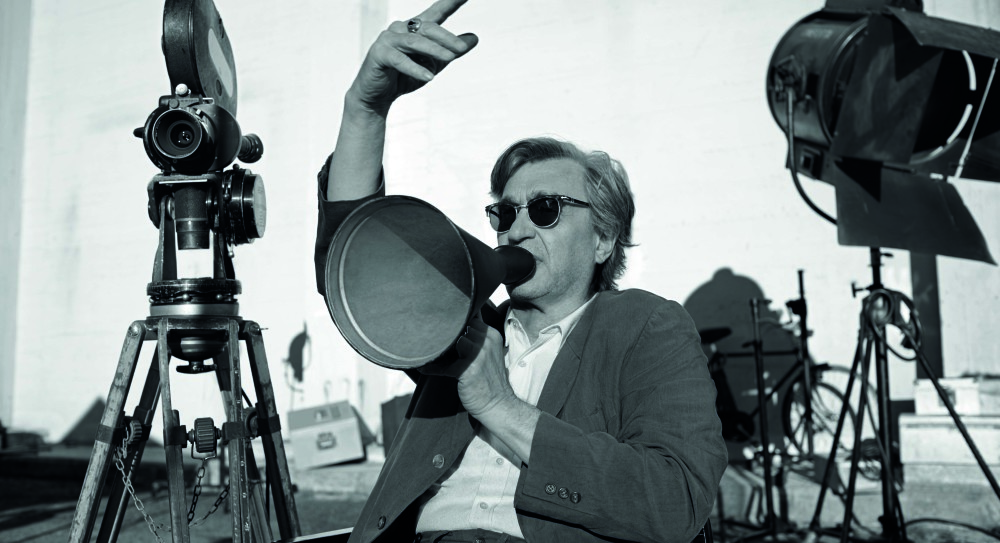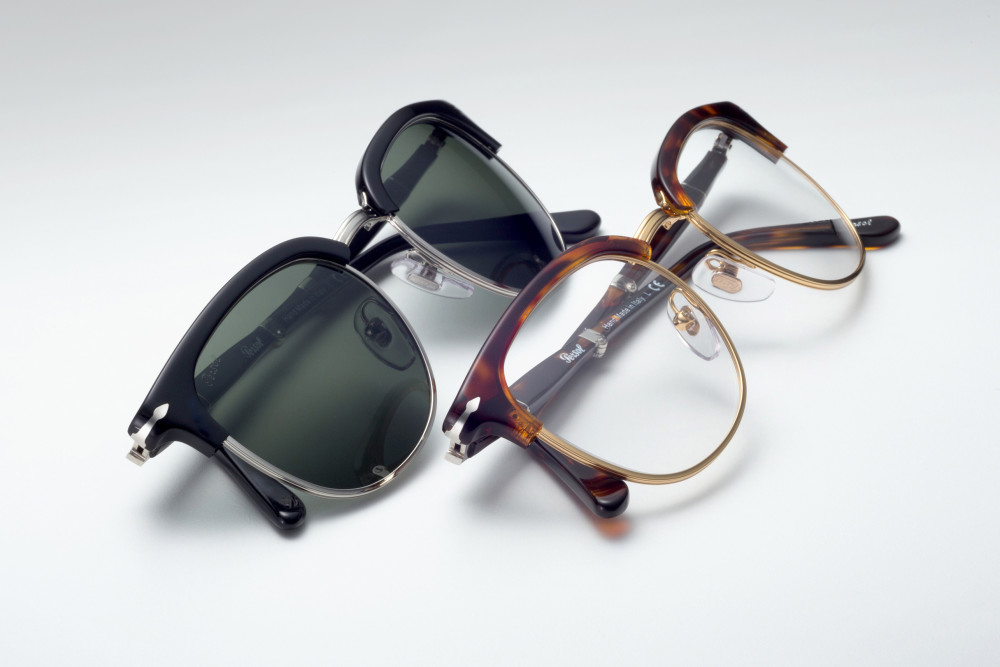PORT meets the enigmatic German filmmaker to discuss the movies that influenced his career, his penchant for 3D film and a recent collaboration with Italian eyewear brand Persol

Wim Wenders isn’t so much a director, as a polymath. The 70-year-old German filmmaker, best known for his BAFTA-winning Paris, Texas, is also an author, playwright, painter, producer, actor, photographer, cinematographer and editor. He has a wicked sense of humour too.
It’s early evening in Milan and Wenders is getting ready to unveil his latest project: Vai Paparazzo, a film for the Italian eyewear brand Persol. In the brief time we have been chatting, there are brilliant flashes of Wenders’ classic wit and the first arrives at an unlikely juncture.
“My most challenging film was Until the End of the World,” Wenders says, perched on the edge of his armchair. He’s wearing a beige suit, white button-up shirt, and his signature eyewear, horn-rimmed glasses. He looks formal, that is until you spot the red Converse trainers.

“Until the End of the World was the most ambitious film I’ve ever done, and the most expensive,” he tells me. It’s no secret that Wenders’ passion project was a big undertaking. The film took over 15 years (and $23 million) to produce. And, to make matters worse, it was heavily edited by the film’s distributors. “We had to release the film in a ‘Reader’s Digest’ version”, he says. “That sucked,” he says, trying his best to suppress a smirk.
It wasn’t until the 1960s, when he was in his late 20s and working as an engraver in Montparnasse, that Ernst Wilhelm ‘Wim’ Wenders truly discovered film. And one film, in particular. “I found a movie that was so close to my own childhood,” he says. “So close to all the ruins and debris of war that I had grown up in, and that was Vittorio De Sica’s The Miracle in Milan.” This was to inspire one of Wenders’ most popular productions, Wings of Desire – both films feature ravaged postwar cities, their impoverished denizens clinging on to hope and angels intervening with the natural order. But make no mistake, Wings of Desire is still very much a Wim Wenders film: poetic, bleak and with a beautiful black and white aesthetic that was created by using a filter made from the stocking belonging to the grandmother of French cinematographer Henri Alekan.

Wings of Desire was preceded by the critically acclaimed Paris, Texas in 1984, but four years later, Wenders’ career took a turn for the worse with Until the End of the World. Wenders sci-fi flick grossed a paltry $752, 856 at the US box office. However, the director assures me that there’s still hope for his dystopian epic. “It’s still a project that I’m extremely attached to,” he says with a sigh. “I’m very proud of it. And now, a quarter of a century later, I can show and release the real film, which is my cut, the original length.” And how long is the original? Just short of five hours.
Two years after Until the End of the World, Wenders hit back, this time with his Wings of Desire sequel, entitled Faraway, So Close! which was awarded the Grand Prix de Jury at Cannes Film Festival. In 1999, Wenders’ career soared to even greater heights with the release of Buena Vista Social Club. The Academy Award-nominated film documented Wenders’ long-time friend and collaborator, Ry Cooder, reuniting the legendary the Cuban musicians to perform for the first time since Fidel Castro’s reign. The film made an impressive $23 million at the box office, but Wenders wasn’t going to rest on his laurels.
In 2011, Wenders returned to cinema yet again, but this time, making his first foray into 3D filmmaking was the Oscar-nominated documentary Pina about the contemporary dance choreographer Pina Bausch. The film was met with universal acclaim and altered Wenders’ entire approach to filmmaking. “I’m so into 3D now that it’s almost an effort to think in two dimensions, let alone in black and white,” he says, laughing.

His latest film, Every Thing Will Be Fine, starring James Franco and due for release in December, is Wenders’ fifth film in 3D. It’s also his first full-length dramatic feature in seven years. In the interim he’s directed various shorts and documentaries, including the Oscar-nominated The Salt of the Earth, about the Brazilian photographer Sebastião Salgado. And then there’s his most recent triumph Vai Paparazzo!, which Wenders shot for Persol’s re-launch of the Cellor, a series of collapsible frames first released in the 1950s.
The short is a sumptuous homage to the golden age of Italian cinema and evokes the work of Italian directors such as Roberto Rossellini, Federico Fellini, and De Sica, whose grandson, Brando, was even on hand to direct the behind-the-scenes video. “He’s a very talented young man with a very heavy burden,” Wenders says. “It’s not easy to carry that name, but he carries it elegantly.” He smiles, gently pushing up his horn-rimmed glasses.
Vai Paparazzo! is also Wenders first time acting in four years. “I still feel much more comfortable behind the camera,” he explains with a self-deprecating laugh. “You’re so self-conscious when you’re in front of the camera. You can’t even watch yourself at the same time.” He rolls his eyes, feigning vanity. Then, all of a sudden, there’s a sly grin. “But it was fun!” It seems that even after 70 years and 59 films, the director hasn’t lost his touch. Or his wicked sense of humour.




